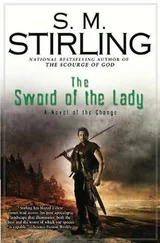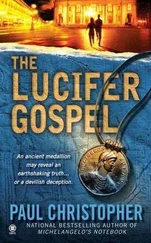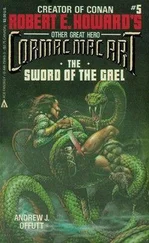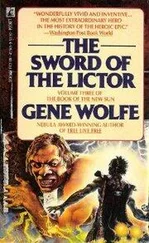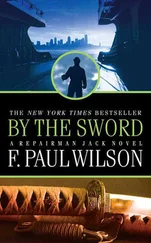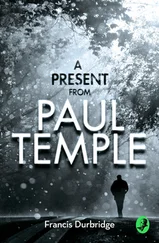Paul Christopher - The Sword of the Templars
Здесь есть возможность читать онлайн «Paul Christopher - The Sword of the Templars» весь текст электронной книги совершенно бесплатно (целиком полную версию без сокращений). В некоторых случаях можно слушать аудио, скачать через торрент в формате fb2 и присутствует краткое содержание. Жанр: Триллер, на английском языке. Описание произведения, (предисловие) а так же отзывы посетителей доступны на портале библиотеки ЛибКат.
- Название:The Sword of the Templars
- Автор:
- Жанр:
- Год:неизвестен
- ISBN:нет данных
- Рейтинг книги:3 / 5. Голосов: 1
-
Избранное:Добавить в избранное
- Отзывы:
-
Ваша оценка:
- 60
- 1
- 2
- 3
- 4
- 5
The Sword of the Templars: краткое содержание, описание и аннотация
Предлагаем к чтению аннотацию, описание, краткое содержание или предисловие (зависит от того, что написал сам автор книги «The Sword of the Templars»). Если вы не нашли необходимую информацию о книге — напишите в комментариях, мы постараемся отыскать её.
The Sword of the Templars — читать онлайн бесплатно полную книгу (весь текст) целиком
Ниже представлен текст книги, разбитый по страницам. Система сохранения места последней прочитанной страницы, позволяет с удобством читать онлайн бесплатно книгу «The Sword of the Templars», без необходимости каждый раз заново искать на чём Вы остановились. Поставьте закладку, и сможете в любой момент перейти на страницу, на которой закончили чтение.
Интервал:
Закладка:
“And the fog is lifting,” answered Peggy.
Ahead of them, a few hundred yards away across the water, the harbor front of Friedrichshafen appeared through the thinning mist. On the right there was a large, modern-looking marina; a forest of sail-boat masts rose like sharp splinters cutting through the shredding fog.
There was a heavy stand of trees coming down to the shore on the far left, the twin onion-domed towers of a church rising up through the greenery. In the center was the harbor itself, with the ferry dock and the updated Bauhaus-style glass and steel Medienhaus, the town library, directly behind it. Strung along the old seawall Holliday could see an assortment of older, red-roofed buildings that had survived the bombings. Rising behind it all were the steep, lushly forested hills and valleys of the Bavarian Alps.
“Postcard time,” said Peggy.
“We’ll see,” said Holliday. Baghdad had been a Disney location before it turned into a war zone.
The ferry nosed between the jutting arms of the harbor breakwater and moved toward the docks. People around them began heading down to the main deck and their automobiles. The engines on the ferry reversed in a growling throb, the sound vibrating up through the hull. The fog was quickly disappearing and the sun was shining down on the town. Peggy was right; it was a postcard.
“We’d better go,” she said. The ferry had almost reached the pier.
“All right,” nodded Holliday. They turned away from the rail and headed for the companionway stairs behind them. Perhaps now they’d find out why Uncle Henry’s house had been put to the torch and why his friend Derek Carr-Harris had been murdered. First they’d find a cheap hotel in town, and then they’d lay siege to Axel von Kellerman in his castle.
13
According to the brochure Holliday and Peggy picked up at their Friedrichshafen hotel, the original Schloss Kellerman had been built in A.D. 1150 by the Grafen von Kellerman-Pinzgau, feudal lords of the area. The castle was destroyed during a peasants’ revolt in 1526 and had lain in ruins ever since.
The “new” Schloss Kellerman, an exquisite manor house in the Baroque style of the times built at the foot of the hill on which the ruins still stood, had been constructed in 1760 by Count Anton von Цttingen-Kellerman, a reigning Bavarian prince of Pinzgau and a descendant of the original owners.
The Schloss had been in the possession of the Kellerman family ever since, and as well as still being the family residence it was also a museum and occasional venue for seminars dealing with European Stone Age and Bronze Age studies.
The Kellerman estate was located four miles north of Friedrichshafen, set at the foot of a steep, heavily wooded hillside and reached by a twisting road that wound between the trees, eventually opening up into a broad meadow, part of which was a planted orchard while the other part had been laid out as a formal ornamental garden complete with animal topiary and a high hedge maze. Beside the maze there was a pea gravel parking lot.
“Creepy,” said Peggy, climbing out of the Peugeot they’d rented two days before in Zurich.
The weather was sunny and warm, without a hint of the gloomy fog that had greeted them on their arrival the day before. Holliday locked the car, and he and Peggy walked up the path toward the house.
The manor was a sprawling series of two-story buildings arranged in an elongated L shape, the red tile roof-lines broken here and there with turrets and towers, all of it done in whitewash over stucco, some of the walls overgrown with ivy. The windows were arched and recessed, outlined in strips of fancy brickwork, and the towers were finished with Lego-like stepped fretwork.
The lawns surrounding the estate were golf course groomed, the flowerbeds neatly edged with six-inch-high retaining walls, the beds themselves ablaze with flowers and dense with perfectly manicured shrubbery. It was all like a giant dollhouse owned by a dainty princess, an unflawed dream you only saw in Architectural Digest.
“No littering around here,” commented Peggy. “Someone’s a bit of a neat freak.”
They went up a broad series of granite steps and reached the main entrance. The capstone in the arch over the open doorway had been carved into an armorial shield: a single upright sword, bound by a twisted ribbon.
“Isn’t that interesting?” murmured Holliday, looking upward.
They stepped through the broad entrance and into the manor house. A female uniformed attendant took their money, handing them each a yellow plastic squeeze badge and a pamphlet in return. The pamphlet was trilingual: English, French, and German. They walked down a long entrance hallway, their feet echoing on the black and white tiles of the marble floor.
A few people were wandering in and out of rooms, all wearing the same expression of bored expectation common to tourists already overburdened with more information than they needed. Judging by the minimal crowds, it didn’t look as though Schloss Kellerman was very high on anyone’s “must-do” list.
According to the brochure, two large rooms on the left contained models of both Stone Age and Bronze Age villages that had once occupied the grounds of the Schloss, while the smaller room on the right, once the manor’s dining hall, was now given over to relics and artifacts relating to the Kellerman family.
“I’m still not sure what this is going to accomplish,” said Peggy. “We don’t even know if Kellerman is here.”
“Recon,” said Holliday quietly. “Getting the lay of the land.” He turned right into the old dining hall.
The room was immense, ceilings soaring twenty feet overhead, coffered in exotic woods. The plaster squares between the thick crossed beams were inset with sculptured plaster medallions of cupids and angels cavorting around the cables supporting a dozen dangling crystal chandeliers.
The far wall was set with three tall windows sheeting sunlight into the room and across the dark blue patterned carpeting that lay across the dark oak floor. The nearer wall was hung with portraits of Kellermans long past. Where there were no portraits in oils there were photographs in silver frames, and between all of the hanging art and photographs there were eight full suits of armor, evenly spaced, running the length of the room like knights waiting for their king.
On the end walls were the broad hearths and wide mantels of matching fireplaces. The fireplaces were both cold and empty, scrubbed clean of any evidence of use. Above them tapestries had been strung. Between the fireplaces, where there once would have been a dining table capable of seating sixty guests or more, there was now a row of glass and wood display cases, each one containing items from a distinct period in the history of the Kellerman family.
A Viking “bearded” iron broadax blade discovered during a nineteenth-century archaeological dig on the grounds; a chalice and candlesticks used in the family chapel of the original castle; an enameled brooch portraying Christ, once worn by Countess Gertrude, the wife of Count Anton von Цttingen-Kellerman, the builder of the most recent Schloss. An ornate Kleigen thal naval saber presented to a Kellerman who’d joined the German Navy in the 1800s. A Pickelhaube spiked Prussian Army helmet worn by yet another Kellerman general, this one during the First World War.
Evidence of Kellermans everywhere, but not a sign of SS-Gruppenfьhrer General Lutz Kellerman anywhere at all.
“So World War Two never happened,” Peggy murmured.
Beside the open doorway leading to the inner hall there was a tall glass case given over to the present-day Kellerman family. There were several scale models of farm machinery manufactured by Kellerman AG, a cutaway model of a patented device for sowing grain, and at least a dozen photographs of Axel Kellerman: Axel at a charity banquet on the arm of a blond television actress, Axel at a child’s hospital bed, Axel with a famous grinning Hollywood star on a film set, Axel wearing scuba tanks and levering himself into a boat in the Caribbean.
Читать дальшеИнтервал:
Закладка:
Похожие книги на «The Sword of the Templars»
Представляем Вашему вниманию похожие книги на «The Sword of the Templars» списком для выбора. Мы отобрали схожую по названию и смыслу литературу в надежде предоставить читателям больше вариантов отыскать новые, интересные, ещё непрочитанные произведения.
Обсуждение, отзывы о книге «The Sword of the Templars» и просто собственные мнения читателей. Оставьте ваши комментарии, напишите, что Вы думаете о произведении, его смысле или главных героях. Укажите что конкретно понравилось, а что нет, и почему Вы так считаете.

